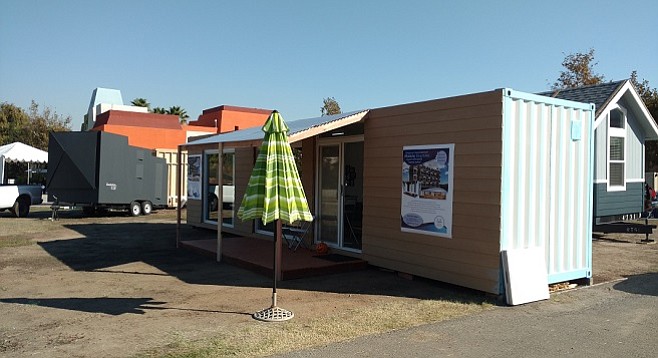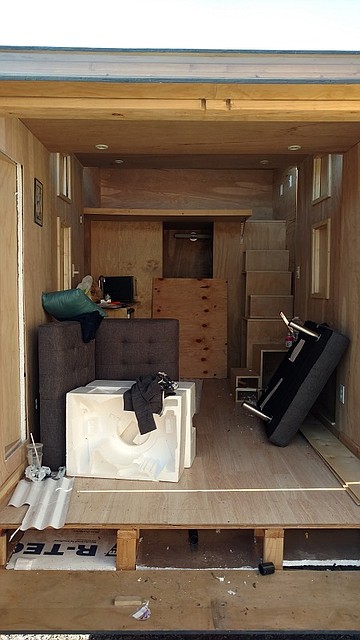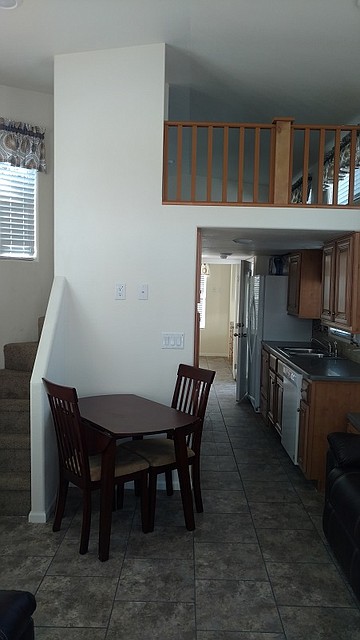 Facebook
Facebook
 X
X
 Instagram
Instagram
 TikTok
TikTok
 Youtube
Youtube

Alternately referred to under terms such as "companion units," "accessory dwellings,” or, more colloquially, "granny flats" (Coronado prefers the unique term "carriage houses"), the practice of adding a second residence to a single-family lot has sparked debate in recent months. Proponents say the extra units are needed to address acute housing shortages and attendant housing-affordability issues, while detractors worry about noise, traffic, and parking problems, especially in neighborhoods already denser than planned, like the College Area.

Despite the debate, both state and local agencies have taken steps to make the extra units easier to build. In January, a statewide law took effect banning water and sewer agencies from charging hookup fees for a second unit being added to a site where connections for an existing home are already in place. This summer, San Diego's city council passed their own regulations that added onto the state efforts, waiving additional parking requirements if units are built near public transit, among other perks.
This Saturday, a host of different options for pre-manufactured tiny homes will be on display at Market Creek Plaza in Lincoln Park (310 Euclid Avenue), with models ranging from the bare-bones to miniature opulence illustrating what homeowners might be able to install to turn their backyards into revenue streams.
"These are the kind of units that come on the back of a truck and get dropped with a crane into your backyard," said Philip Bona, president of the American Institute of Architects' San Diego chapter at a media preview on Thursday (October 25th). "There are over 190,000 lots in San Diego County that have the size to carry a second unit.
"This is all about how we're going to house the next one million in San Diego. It's about housing affordability. We want the people of San Diego to know that there are choices, alternatives even at the very low-income level. This is an opportunity for permanent supportive housing, and we need to be building this instead of tents."
While the units themselves range in cost from $15,000 to $70,000, the permits and fees associated with their installation can run as high as $80,000, dwarfing the homes' construction cost.
City councilmember Scott Sherman, who chairs the body's smart growth and land-use committee (David Alvarez and Georgette Gómez are also members), also stopped by to weigh in.

"We're facing two different crises in San Diego — a homelessness crisis and a housing crisis. Those two run together," Sherman said. "We see so many people on the streets because there's no place they can afford to put a roof over their head. These tiny-house solutions can offer a solution to that dead end."
According to the National Alliance on Mental Illness's Cathryn Nacario, 80 percent of the more than 7000 inquiries her group receives annually regard housing issues associated with the population battling mental health issues. Thirty-nine percent of San Diego's homeless self-report mental illness, and this population is among the most likely to experience chronic housing challenges.
"We're looking at a program up in Portland, Oregon, where, through different social services, they bring in these homes, put them on a piece of property," Sherman continued. "You agree to have someone in the mental health system live in that property for a period of time. Once that is done, that granny flat is now yours — you can rent it out at market rates. Not only are you dealing with the mental health side of things, you're also providing that bridge-gap housing that doesn't exist right now.
"Say you're a young family who's just bought into a market where the average price for a single-family home is over a half-million dollars — you need help to offset some of that cost. You can put one of these little tiny homes on your property to help offset some of that mortgage while providing housing to people who need help at that first rung of the ladder before they start moving up."
Tiny Homes Central and the American Institute of Architects will be hosting an open house, where visitors can tour trailer-based homes, those designed for permanent installation, and even one unit constructed from a converted shipping container (the builder says models with up to three bedrooms are possible) from 9 a.m. to 5 p.m. on Saturday, October 28.


Alternately referred to under terms such as "companion units," "accessory dwellings,” or, more colloquially, "granny flats" (Coronado prefers the unique term "carriage houses"), the practice of adding a second residence to a single-family lot has sparked debate in recent months. Proponents say the extra units are needed to address acute housing shortages and attendant housing-affordability issues, while detractors worry about noise, traffic, and parking problems, especially in neighborhoods already denser than planned, like the College Area.

Despite the debate, both state and local agencies have taken steps to make the extra units easier to build. In January, a statewide law took effect banning water and sewer agencies from charging hookup fees for a second unit being added to a site where connections for an existing home are already in place. This summer, San Diego's city council passed their own regulations that added onto the state efforts, waiving additional parking requirements if units are built near public transit, among other perks.
This Saturday, a host of different options for pre-manufactured tiny homes will be on display at Market Creek Plaza in Lincoln Park (310 Euclid Avenue), with models ranging from the bare-bones to miniature opulence illustrating what homeowners might be able to install to turn their backyards into revenue streams.
"These are the kind of units that come on the back of a truck and get dropped with a crane into your backyard," said Philip Bona, president of the American Institute of Architects' San Diego chapter at a media preview on Thursday (October 25th). "There are over 190,000 lots in San Diego County that have the size to carry a second unit.
"This is all about how we're going to house the next one million in San Diego. It's about housing affordability. We want the people of San Diego to know that there are choices, alternatives even at the very low-income level. This is an opportunity for permanent supportive housing, and we need to be building this instead of tents."
While the units themselves range in cost from $15,000 to $70,000, the permits and fees associated with their installation can run as high as $80,000, dwarfing the homes' construction cost.
City councilmember Scott Sherman, who chairs the body's smart growth and land-use committee (David Alvarez and Georgette Gómez are also members), also stopped by to weigh in.

"We're facing two different crises in San Diego — a homelessness crisis and a housing crisis. Those two run together," Sherman said. "We see so many people on the streets because there's no place they can afford to put a roof over their head. These tiny-house solutions can offer a solution to that dead end."
According to the National Alliance on Mental Illness's Cathryn Nacario, 80 percent of the more than 7000 inquiries her group receives annually regard housing issues associated with the population battling mental health issues. Thirty-nine percent of San Diego's homeless self-report mental illness, and this population is among the most likely to experience chronic housing challenges.
"We're looking at a program up in Portland, Oregon, where, through different social services, they bring in these homes, put them on a piece of property," Sherman continued. "You agree to have someone in the mental health system live in that property for a period of time. Once that is done, that granny flat is now yours — you can rent it out at market rates. Not only are you dealing with the mental health side of things, you're also providing that bridge-gap housing that doesn't exist right now.
"Say you're a young family who's just bought into a market where the average price for a single-family home is over a half-million dollars — you need help to offset some of that cost. You can put one of these little tiny homes on your property to help offset some of that mortgage while providing housing to people who need help at that first rung of the ladder before they start moving up."
Tiny Homes Central and the American Institute of Architects will be hosting an open house, where visitors can tour trailer-based homes, those designed for permanent installation, and even one unit constructed from a converted shipping container (the builder says models with up to three bedrooms are possible) from 9 a.m. to 5 p.m. on Saturday, October 28.
Comments